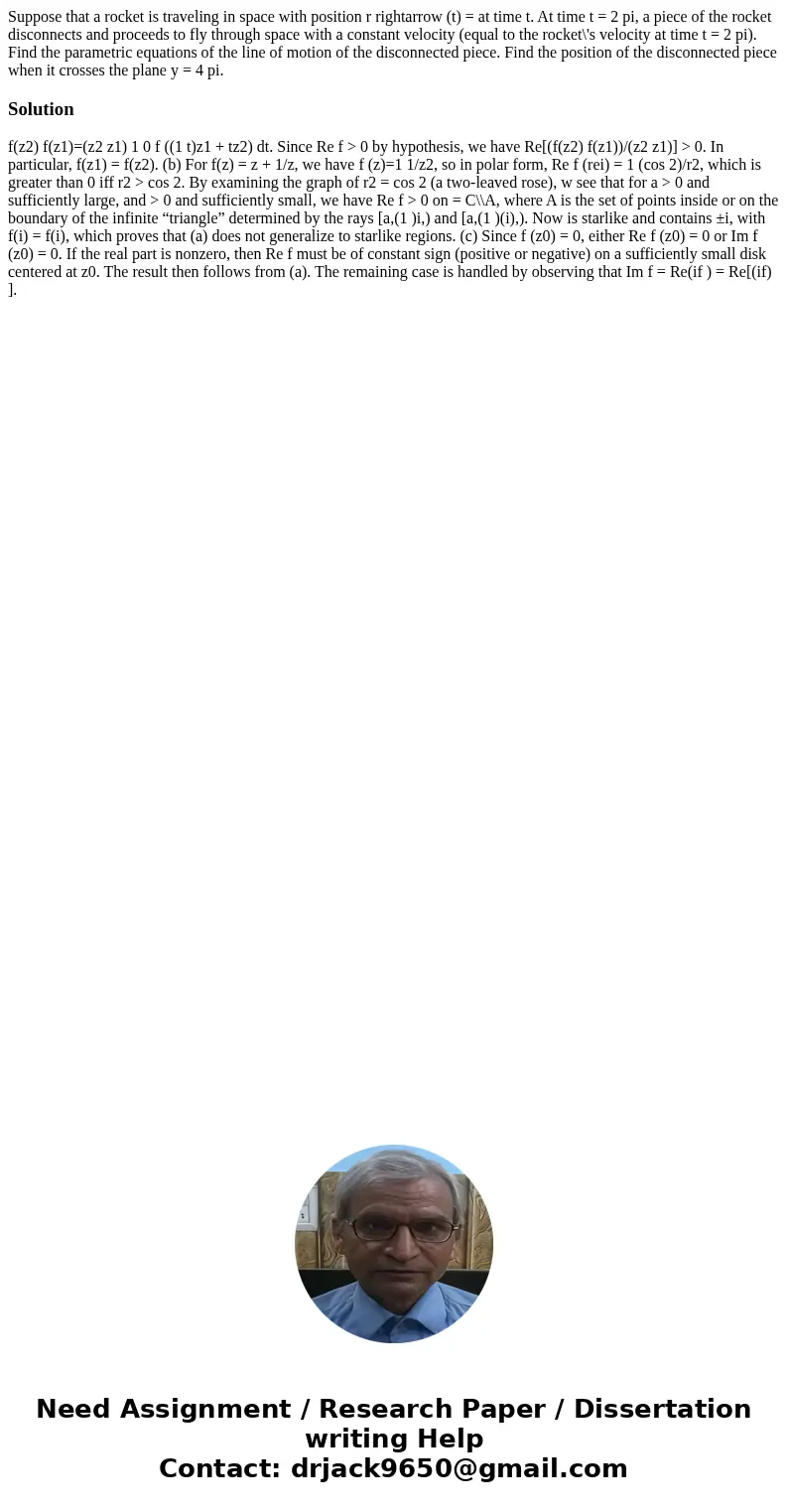Suppose that a rocket is traveling in space with position r
Solution
f(z2) f(z1)=(z2 z1) 1 0 f ((1 t)z1 + tz2) dt. Since Re f > 0 by hypothesis, we have Re[(f(z2) f(z1))/(z2 z1)] > 0. In particular, f(z1) = f(z2). (b) For f(z) = z + 1/z, we have f (z)=1 1/z2, so in polar form, Re f (rei) = 1 (cos 2)/r2, which is greater than 0 iff r2 > cos 2. By examining the graph of r2 = cos 2 (a two-leaved rose), w see that for a > 0 and sufficiently large, and > 0 and sufficiently small, we have Re f > 0 on = C\\A, where A is the set of points inside or on the boundary of the infinite “triangle” determined by the rays [a,(1 )i,) and [a,(1 )(i),). Now is starlike and contains ±i, with f(i) = f(i), which proves that (a) does not generalize to starlike regions. (c) Since f (z0) = 0, either Re f (z0) = 0 or Im f (z0) = 0. If the real part is nonzero, then Re f must be of constant sign (positive or negative) on a sufficiently small disk centered at z0. The result then follows from (a). The remaining case is handled by observing that Im f = Re(if ) = Re[(if) ].

 Homework Sourse
Homework Sourse